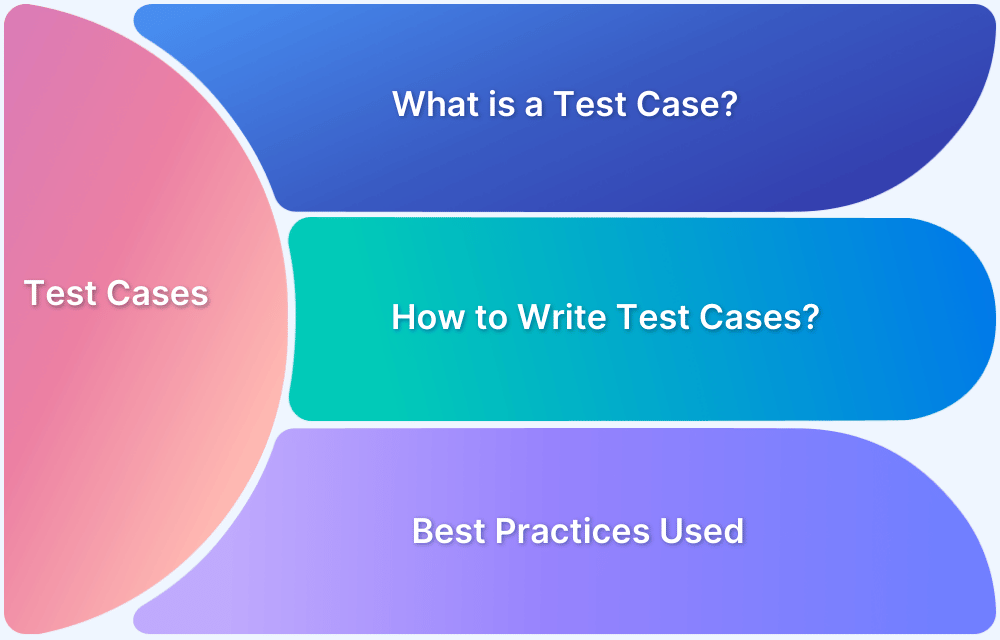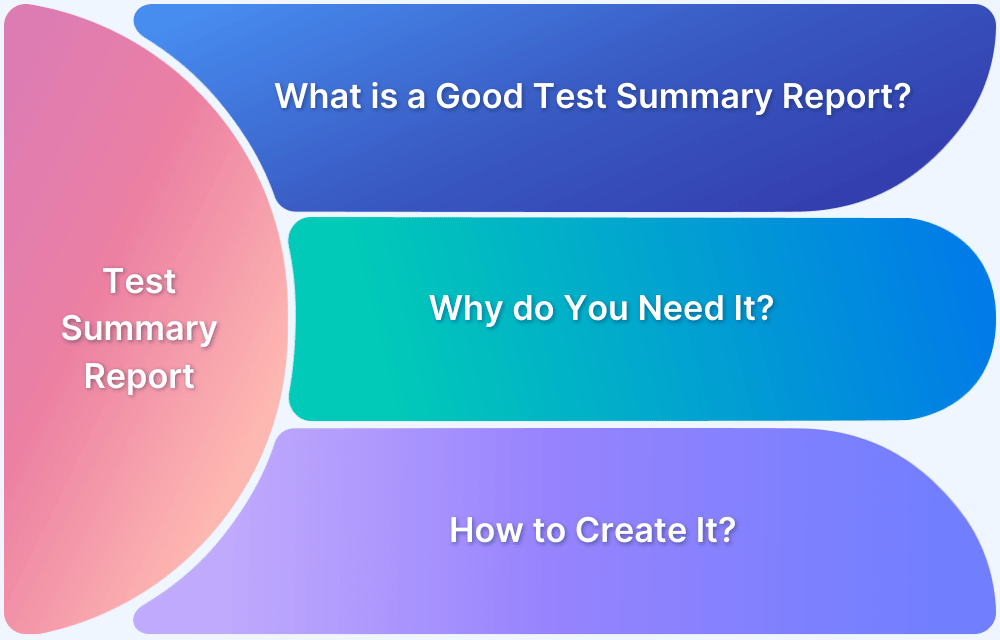Understanding Testing Documentation
By Sandra Felice, Community Contributor - December 20, 2024
Testing documentation is often the unsung hero of the software testing process. While it may initially seem mundane, it plays a pivotal role in ensuring the quality, efficiency, and clarity of software projects.
This article includes everything you need to know about testing documentation, its importance, and some best practices.
- What is Testing Documentation?
- Why is Testing Documentation Important?
- When Should You Create Testing Documentation?
- Types of Testing Documentation
- Advantages of Test Documentation
- Disadvantages of Manual Testing Documentation
- Best Practices for Testing Documentation
- Why choose BrowserStack for Testing documentation?
What is Testing Documentation?
Testing documentation refers to all the written records, files or digital notes that capture the various aspects of a software testing process. Think of it as a roadmap that helps teams navigate through the testing lifecycle. It includes everything from high level plans and strategies to granular details like test cases and bug reports.
Why is Testing Documentation Important?
Testing documentation ensures a smooth, efficient, and effective testing process. Here’s why it matters:
- Clear Communication: It provides a shared understanding among team members, outlining what needs to be tested, how, and why. This minimizes confusion and keeps everyone on the same page.
- Better Test Coverage: By documenting test scenarios, cases and strategies, you ensure that all functionalities and requirements are tested thoroughly, reducing the risk of missing critical issues.
- Traceability: Documents like the Requirement Traceability Matrix (RTM) help track every requirement to its corresponding test, ensuring nothing is overlooked and all needs are met.
- Easier Defect Management: Bug reports and test logs make it simple to identify, reproduce & resolve defects, improving the overall software quality.
- Consistency and Repeatability: Test documentation ensures that tests can be consistently repeated by different team members or in future iterations, making it easier to validate fixes and updates.
- Supports Decision Making: Documents like test execution reports & test summaries provide insights into the product’s readiness, helping stakeholders decide if it’s ready for release.
Read More: How to write a good Test Summary Report
When Should You Create Testing Documentation?
Testing documentation should be created at different stages of the software development lifecycle (SDLC) to keep the process organized and effective.
Here’s an overview of these documents:
Before Testing
Before testing begins, many important documents are prepared to ensure a structured process:
- SRS Document (Software Requirement Specification): Details the functional requirements of the software.
- Test Policy Document: Defines the approach to testing, emphasizing that testing should begin well before the product release.
- Test Strategy Document: Outlines the testing framework, including team roles, responsibilities, and the test manager’s and test engineer’s duties.
- Traceability Matrix: Tracks requirements from the gathering phase through to implementation. It helps map requirements to tests, ensuring every requirement is covered and can be traced back and forth.
During Testing
During the testing, additional documents are created and updated:
- Test Case Document: Lists all test cases and covers various testing phases, such as Unit, Integration, System, and Acceptance testing.
- Test Description: Provides detailed descriptions of each test case and the procedures to execute them.
- Test Case Report: Records the results of executed test cases.
- Test Logs: Maintains test execution logs & tracking activities for each test case.
After Testing
After the testing, the focus shifts to summarizing results:
- Test Summary Report: Compiles an analysis of all test results and logs, concluding whether the software is ready for release.
- Version Control System: If the software passes all the criteria, its released under version control, ensuring proper management of its launch version.
Types of Testing Documentation
Here are the key types of documents commonly used:
1. Test Scenarios
High-level descriptions of what needs to be tested, focusing on specific functionality or user workflows. These help identify critical areas for testing without diving into detailed steps.
Read More: How to create Test Scenarios (with Examples)
2. Test Cases
Detailed documents specifying test steps, input data, expected results and actual results for individual test scenarios. They guide testers on how to execute tests systematically.
3. Test Plan
A comprehensive document outlining the testing process’s scope, objectives, resources, schedule, and approach. It serves as a roadmap for the entire testing lifecycle.
4. Requirement Traceability Matrix (RTM)
A document that maps the requirements to the test cases, ensuring every requirement is tested and nothing is overlooked. It helps maintain traceability throughout the testing process.
5. Test Strategy
A high level document that defines the testing approach, including methodologies, tools, team responsibilities and risk management strategies. It’s the foundation for planning and execution.
Read More: How to write a Test Strategy Document
6. Test Data
Test data is the information needed to execute test cases. This includes input values, expected outputs, and boundary values to validate software behavior in different scenarios.
7. Bug Report
A detailed record of issues or defects found during testing, including their description, severity, reproduction steps and status. It helps developers fix & track bugs efficiently.
8. Test Execution Report
A summary of the results from executed test cases shows which tests passed, failed or skipped. This provides an overall view of the testing progress and software quality.
Read More: How to write an effective Bug Report
Advantages of Test Documentation
Some of the advantages include:
- Clear Communication and Alignment: Test documentation provides a clear outline of the testing scope, objectives and requirements, ensuring that all project stakeholders—developers, testers and managers—are aligned and understand the testing process & goals.
- Enhanced Test Coverage: Well documented test cases ensure comprehensive coverage of the software’s functional & non-functional aspects, reducing the risk of overlooking critical defects.
- Facilitates Regression Testing: Documented tests can be reused during regression testing, ensuring that new changes do not introduce defects & maintaining consistency across testing phases.
- Knowledge Preservation: Test documentation preserves valuable testing knowledge as a reference for future projects and a resource for onboarding new team members.
- Regulatory Compliance: For industries with strict regulations (e.g., healthcare, finance), test documentation is essential for meeting compliance standards and providing audit trails.
Disadvantages of Manual Testing Documentation
Some of the disadvantages include:
- Time Consuming: Creating & maintaining detailed test documentation can be time consuming, especially when there are frequent requirements or software changes.
- Overhead Potential: Excessive or overly detailed documentation might lead to unnecessary overhead and slow testing, especially in fast paced agile environments.
- Risk of Obsolescence: Test documentation can only be updated if regularly maintained, leading to discrepancies between the test cases and the actual software.
- Complexity: Managing and updating extensive documentation for large projects can become complicated, especially if there are many test cases and frequent changes.
- May Limit Flexibility: In some cases, test documentation can restrict flexibility, especially in dynamic, agile environments where changes are frequent and rapid adaptation is needed.
Best Practices for Testing Documentation
Following are some of the best practices for testing documentation:
- Centralized Knowledge Base: Store all test documentation in one accessible location to ensure team members can easily find & trust the information, avoiding duplication or wasted effort.
- Keep Documentation Updated: Regularly update test documentation to reflect changes in requirements and maintain accuracy as the software evolves.
- Ensure Privacy and Security: Use secure systems to restrict access to documentation, protecting sensitive information from unauthorized access.
- Promote Documentation Culture: Educate your team on the value of test documentation and encourage active participation in creating, maintaining, and using it effectively.
- Prune for Relevance: Remove outdated or irrelevant documents to keep the knowledge base concise and valuable for the team and stakeholders.
- Focus on Core Activities: Document only what is essential for testing to avoid unnecessary complexity and ensure each document serves a clear purpose.
- Avoid “Box-Checking” Mindset: Reinforce the importance of documentation as a business-critical activity, not just a task to meet requirements.
- Ensure Consistency: Follow a style guide to standardize documentation across the team, ensuring clarity and uniformity.
- Use Version Control: Implement version control to track changes, understand document history, and revert to earlier versions if needed.
Why choose BrowserStack for Testing documentation?
BrowserStack helps to efficiently manage test cases, strategy documentation & scenarios. It helps to achieve simplified testing documentation with centralized management, real-time insights, and seamless CI/CD integration.
Here is a breakdown of its uses:
1. Creating and Managing Test Cases
BrowserStack’s Test Management tool simplifies test case management by integrating with popular test management tools such as Jira, QTest etc. This allows teams to create, execute, and monitor test cases directly from the platform.
- Centralized Platform: Manage all your test cases in one place with easy accessibility.
- Accurate Device Testing: Test various devices, browsers, and operating systems to ensure comprehensive coverage.
- Automated Reporting: Get detailed reports for every test case, enabling quick identification and resolution of issues.
2. Crafting a Test Strategy Document
BrowserStack supports your testing strategy by providing real-time data, insights, and a vast range of testing environments.
- Broad Testing Scope: Leverage BrowserStack’s cloud infrastructure to test across different devices, browsers & versions.
- Collaborative Features: Instantly share test results & insights with team members, keeping everyone aligned.
- Scalable Solutions: Adapt your strategy to meet evolving testing needs with BrowserStack’s flexible offerings.
3. Testing Scenarios
BrowserStack enables you to execute and manage various test scenarios effectively, whether functional, regression, or exploratory testing.
- Parallel Testing: Run multiple test scenarios simultaneously, reducing testing time significantly.
- Manual Testing & Automation: Execute real time scenarios or automate them with integrations like Selenium, Playwright and Cypress.
- Comprehensive Debugging Tools: Capture logs, screenshots, and videos for each scenario to quickly identify issues.
Conclusion
Testing documentation is the backbone of a successful QA process. While it requires effort, the long term benefits of clarity, traceability and efficiency far outweigh the initial investment.
By following best practices and leveraging tools like BrowserStack Test Management, you can streamline the process and focus on what matters—delivering a high quality product.




